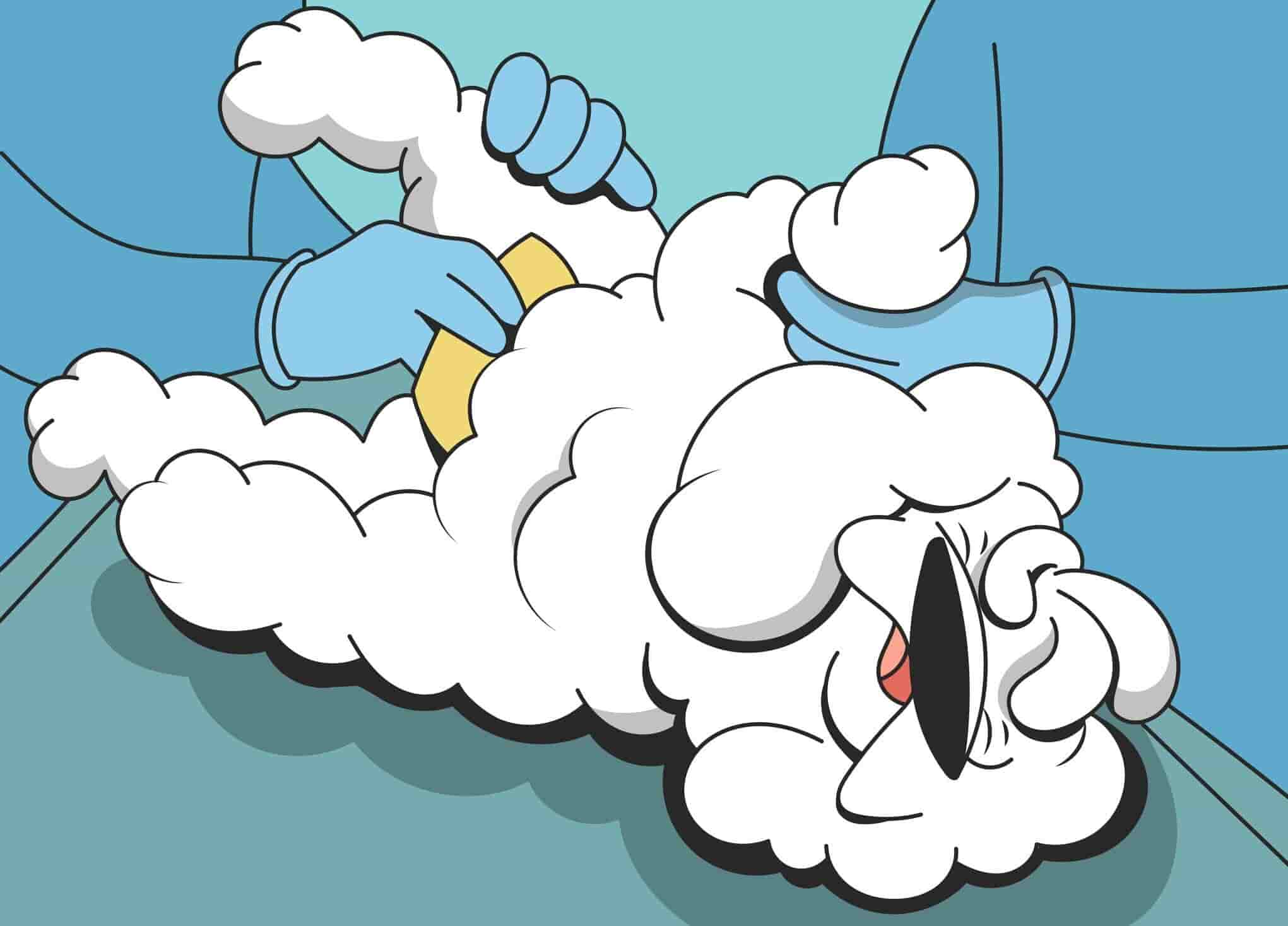Bladder stones in dogs, also known as cystic calculi or uroliths, are, as the name might suggest, stones that occur in the bladder. They can be made of various minerals or compounds, and come in a range of sizes.
Some dogs may have just one bladder stone, whereas others can have an entire collection of them. They range in size, too – from as small as a grain of sugar to as large as a rock.
This article was reviewed by our expert veterinarian, Chris Vanderhoof (DMV).
Is It Possible That My Dog Has Bladder Stones?
Yes, it is possible that your dog has bladder stones. It is a condition that can affect dogs (and other pets/animals) just as much as it can affect humans.
Although we don’t really know what a dog is feeling, it is believed that bladder stones in dogs are quite a painful and unpleasant condition. For that reason, you should seek advice from a vet as soon as you get an inkling that bladder stones might be the cause behind the changes in your poor pooch’s behavior.
What Causes Bladder Stones in Dogs?
There appears to be a little bit of a debate on what actually causes bladder stones in dogs, but the generally understood cause is an increased amount of compounds in the body that naturally form crystals – struvite, calcium oxalate, xanthine, urate, etc.
There are believed to be at least five different compounds that can form five different ‘types’ of bladder stones in dogs.
There are also a number of different potential causes for the increase in crystal-forming compounds, including certain food types, bacterial infections, or pre-existing medical conditions that affect the metabolism or imbalances with phosphorous, calcium, or other minerals.
Certain types of bladder stones in dogs are known to be genetic, passed down from parent to pup, including calcium oxalate bladder stones. Not only that, certain pooch breeds suffer from bladder stones more frequently than others.
Bladder Stones in Dogs: Symptoms
According to research, there are two dog bladder stones symptoms that tend to show themselves before any others, and these are:
- Straining to urinate (medically known as stranguria);
- Blood present in urine (medically known as hematuria).
Because of discomfort seen with those two symptoms, dogs suffering from bladder stones may avoid eating or drinking.
As bladder stones get worse, your furry friend could display more serious symptoms, including:
- Very cloudy, unusually colored, or smelly urine;
- Attempting to urinate with nothing or very little coming out;
- Low levels of energy;
- Obvious signs of pain or discomfort around the stomach/kidney/bladder area;
- A stomach that appears rounder (bloating).
Can Bladder Stones Kill a Dog?
Sadly, yes, bladder stones can kill a dog – but with timely medical intervention and modern medicine, this is quite rare.
Untreated bladder stones in dogs can continue to grow until the root cause – the increase in crystal-forming compounds – is diagnosed and then reversed/treated. The stones can eventually get so big that they prevent the dog from being able to urinate at all. In turn, this can cause very serious problems including build-up of urinary waste products in the bloodstream and bladder rupture.
Are There Different Types of Bladder Stones in Dogs?
Yes, there are believed to be a minimum of five different types of dog bladder stones, created from a minimum of five different minerals or compounds inside a dog’s urinary tract and bladder.
Two types are more common than others, and these are calcium oxalate bladder stones and struvite bladder stones. The latter is also known by a few other names, including triple-phosphate and magnesium ammonium phosphate bladder stones.
Bichon Frise dogs seem to suffer from calcium oxalate bladder stones more frequently than other breeds, and you can also add Shih Tzus and Miniature Schnauzers to the list.
Miniature Schnauzers also seem to suffer from struvite bladder stones a lot, too. Other higher-risk breeds include Labrador Retrievers, Dachshunds, and Yorkshire Terriers.
What is the Treatment for Dog Bladder Stones?
The treatment of dog bladder stones will depend on the type of bladder stones the dog has, how big the stones are, the size and breed of the dog, and a number of other factors.
Dietary Changes
Removing bladder stones in dogs can be as easy as a quick and simple change in diet, usually to one that has a more acidic urine pH to dissolve the stones and lower magnesium, phosphorus, and protein to prevent their formation.
Although natural and somewhat safer than surgery (as well as cheaper), dissolving dog bladder stones with dietary tweaks is not always recommended. The treatment can exasperate existing medical conditions, and dissolving bladder stones can move, causing blockages. This is more so the case with male dogs because they have a thin urethra through which the stones will need to travel.
Urohydropropulsion
This treatment for bladder stones in dogs uses water to propel the bladder stones through the urinary tract and out of the body, but just as with using dietary changes, this method comes with its limitations.
Usually requiring both a catheter and a general anesthetic, urohydropropulsion cannot be used for larger bladder stones, nor can it be used for large breeds of dogs.
Surgery
Surgery to remove bladder stones in dogs can be used for larger struvite stones, and it is almost always recommended to remove calcium oxalate stones. Surgery can put quite a lot of pressure on older, overweight, or unwell dogs, however. It also requires aftercare to prevent infections and a potentially long recovery time.
Access 24/7 Online Vets with Petcube
If you’re worried that your furry friend might have bladder stones, or any other medical condition but are also worried about the effect it’ll have on your bank balance, you should definitely take a peek at Petcube’s 24/7 online vet service.
For less than the price of lunch, you could have the ability to get your pooch checked by a professional and fully qualified vet, at any time of the day or night. Pet emergencies don’t wait until office hours and full bank accounts to occur, and that’s exactly why Petcube’s expert team is there when you need them the most.
Bladder Stones in Dogs: Home Remedies
It is not recommended to rely on home remedies for bladder stones in dogs, although this might be something that your vet discusses with you following diagnostic testing.
Bladder stones can be incredibly dangerous when they are left untreated or treated incorrectly. It is recommended that suspected bladder stones in dogs are checked by a vet and then an appropriate course of treatment (if any) is administered.
If it happens that you are often out of home for work, you can always install an interactive pet camera by Petcube, to keep track of what your precious doggo is doing at home when you're away.
FAQ
What are the Signs of Bladder Stones in Dogs?
Dogs that are suffering from bladder stones will often have a hard time urinating, or will urinate a very small amount. The condition can also cause blood in the urine, lethargy, food and water avoidance, and bloating around the abdomen.
What Food Causes Bladder Stones in Dogs?
Some foods have been linked to an increased chance of dogs suffering from bladder stones, particularly calcium oxalate and struvite bladder stones. These are foods high in certain minerals and compounds, including calcium, magnesium, protein, and phosphorous.
Your dog needs all of these in their diet to be fit and healthy, in moderate amounts. If they consume too much (or too little) of one or more of the compounds, illness, such as bladder stones, can occur.
Are Bladder Stones Painful for Dogs?
We (humans) can’t actually tell whether or not bladder stones are painful for dogs, because we can’t exactly ask them and get a straight, human-language response. Vets and experts do believe that dogs experience pain when suffering from bladder stones, however.

Was this article helpful?
Help us make our articles even better









